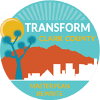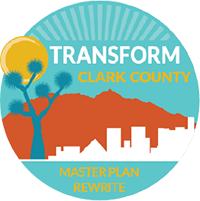Goal 3.3: Maintain and protect the quality, supply, and reliability of Clark County’s water resources for current and future residents
Continue to support Southern Nevada Water Authority (SNWA) efforts and plans to meet current and projected water demands, encourage water conservation, and implement adaptive management strategies.
Coordinate with partner agencies on educational, programmatic, and regulatory strategies to increase water conservation projects and programs throughout Clark County. Utilize the SNWA Joint Water Conservation Plan to ensure conservation opportunities are optimized and reinforced.
Continue to implement an integrated, area-wide water quality management program in accordance with the Clark County 208 Area-Wide Water Quality Management Plan (208 WQMP) and related plans and studies.
Encourage preservation and protection of natural washes and waterways through measures that can improve the quality of water that enters Lake Mead. Utilize the Las Vegas Wash Comprehensive Adaptive Management Plan and related plans and studies to ensure land use compatibility with the Clark County Wetlands Park and associated wash improvements.
Support efforts to restore water quality to levels that allow impaired lakes, streams, and washes to be removed from the State of Nevada’s List of Impaired Rivers.
Encourage the use of vegetative or constructive buffering surrounding area landscapes and farmland to limit the amount of wind erosion and irrigation runoff and protect water quality.
Focus on maintaining quality of groundwater and public water bodies (e.g., lakes and rivers) with efforts to reduce untreated stormwater runoff through expanded use of catchment techniques, green infrastructure, vegetative buffers, regular maintenance of stormwater infrastructure, and continued compliance with the County’s Joint National Pollutant Discharge Elimination System (NPDES) Municipal Separate Storm Sewer System (MS4) Permit (Stormwater Permit).
Coordinate with the Regional Flood Control District (RFCD) on efforts to control localized flooding.
Explore land use and vegetation management practices that protect from aquifer contamination, support the proper abandonment of water wells, coordinate the implementation of the 208 WQMP, and support source water protection.
Support initiatives to divert potentially overtaxing, harmful, or inappropriate development away from areas reaching water availability limits or with high groundwater recharge potential and to expand return flows to the Colorado River.
Limit the density of development in areas that do not or are not planned to have access to public wastewater facilities. Require residential development to connect to public sewer systems where these are available and put in place a plan to assist with conversion from individual septic where sewer service has expanded or will expand.

